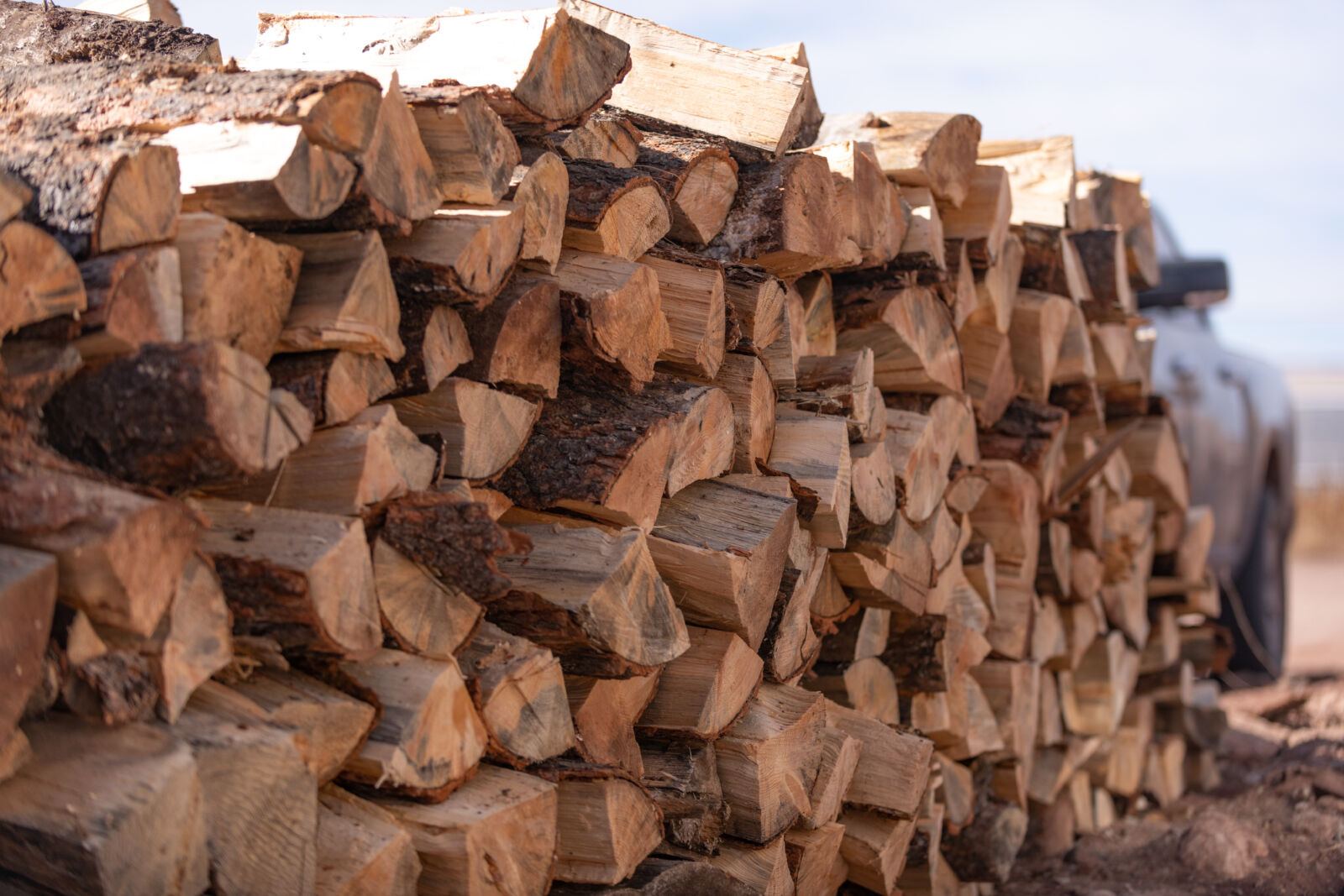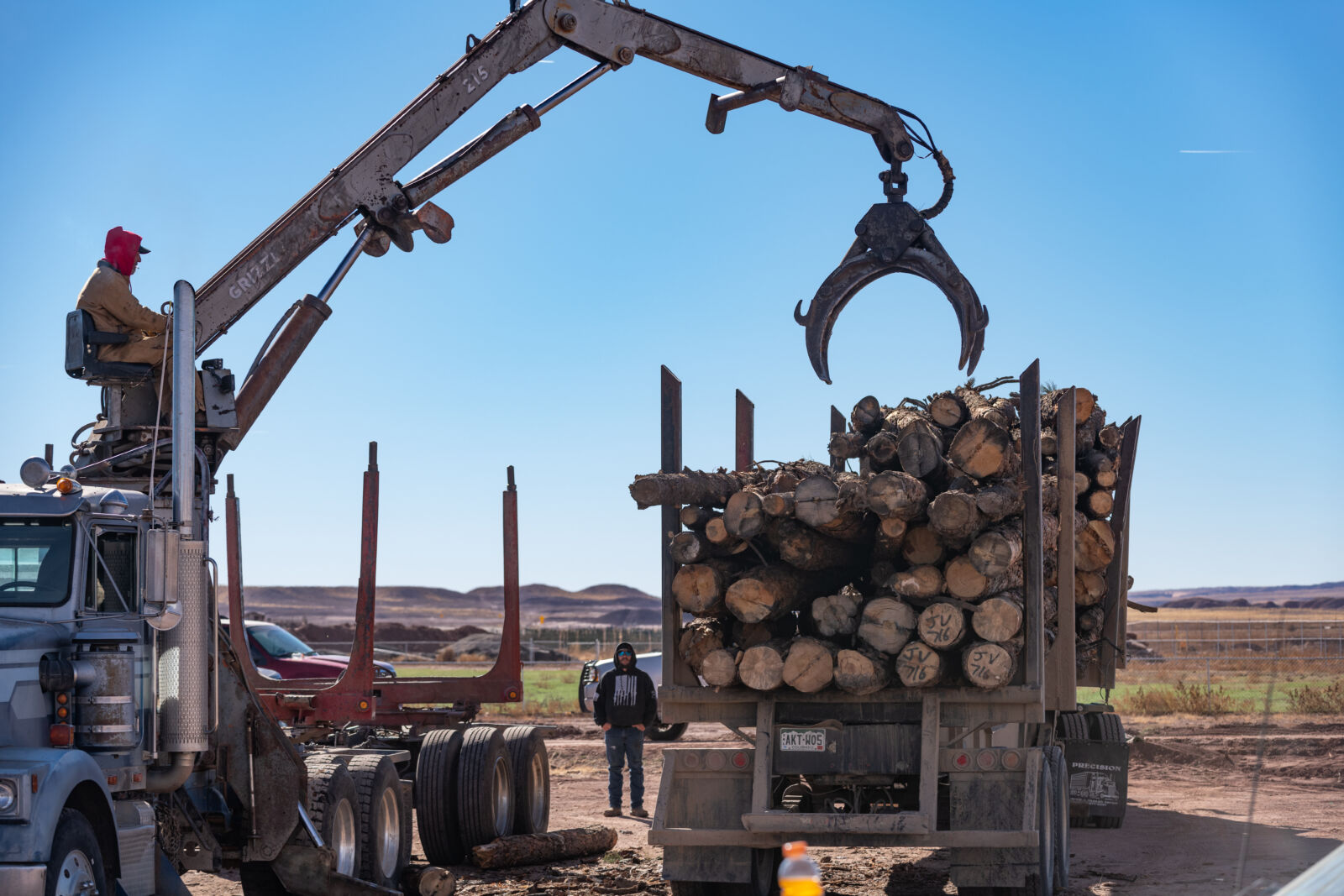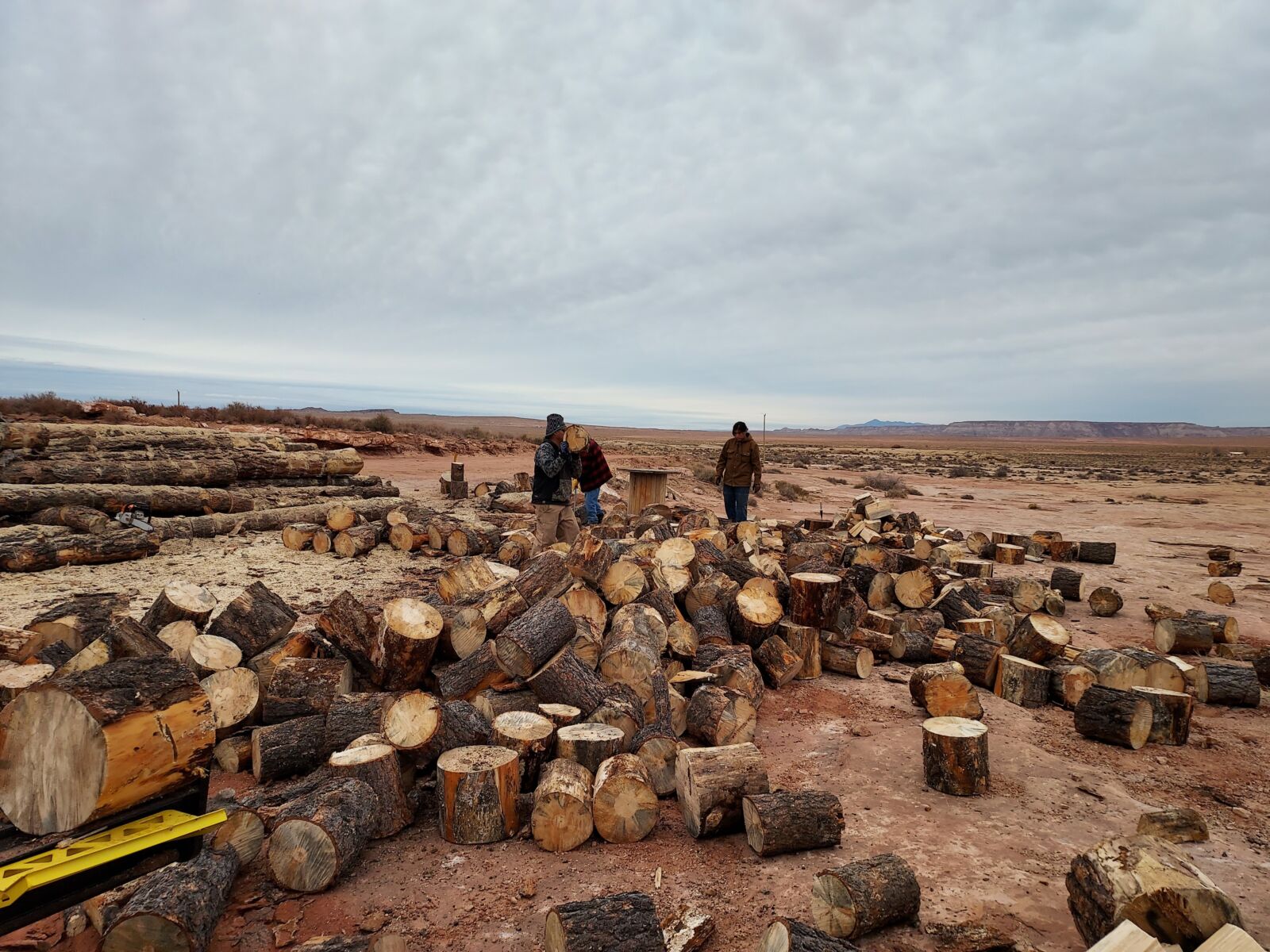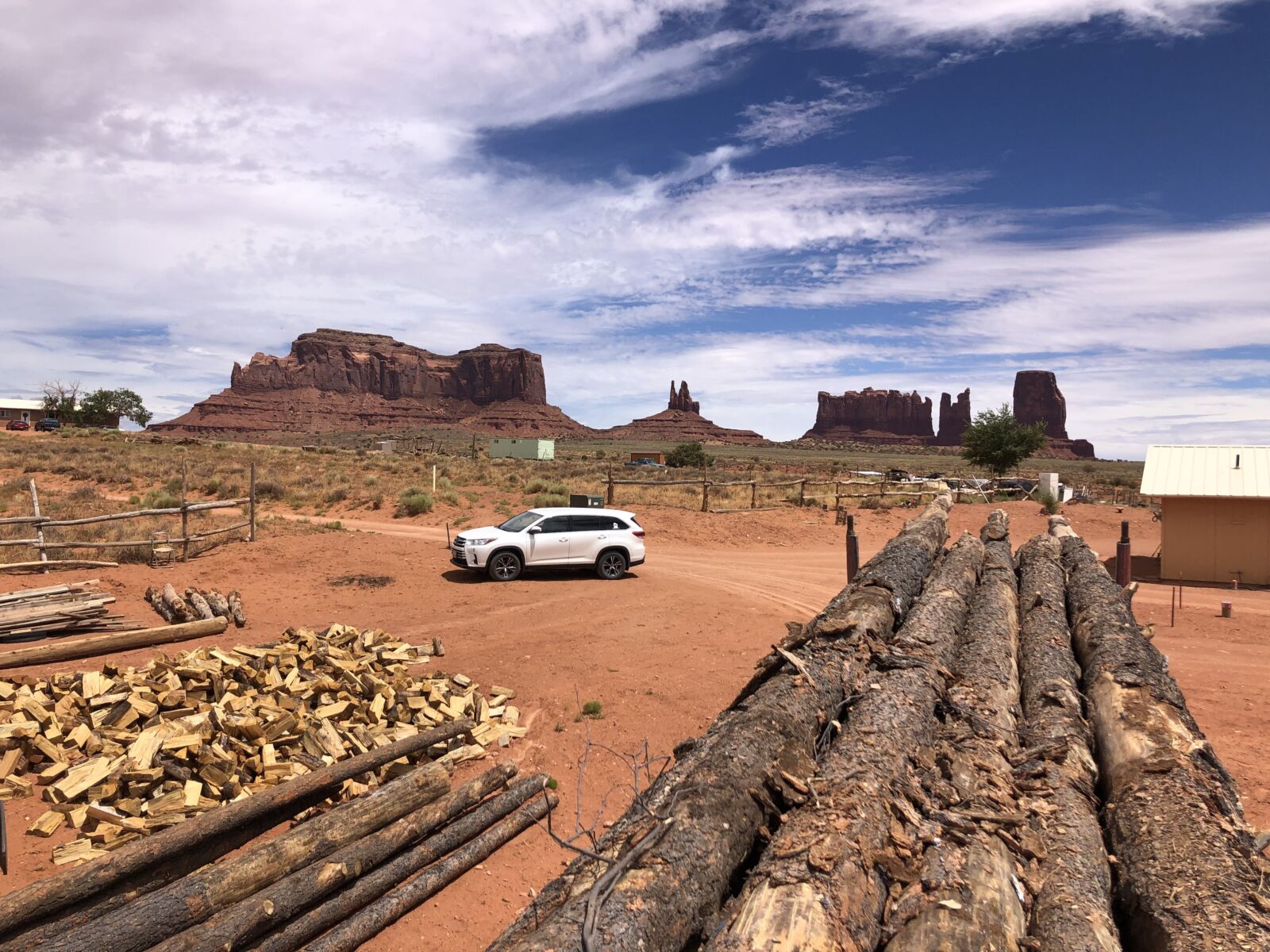Now in its second year, the San Juan Wood For Life (WFL) partnership in southern Colorado continues to grow. After a particularly long winter, the partners hope to deliver up to nine times the number of loads this year to several wood banks. Through the Inflation Reduction Act (IRA) and the Bipartisan Infrastructure Law (BIL), San Juan WFL received $2.25 million this year and this support will likely continue for the next 4 to 5 years.
“We are at a huge inflection point,” says Nick Olson, NFF’s Southwest Colorado Project Coordinator for the Rocky Mountain Region. “This funding has a significant impact on the people involved in the partnership.” This year, it pays for hand crews to conduct thinning operations and for contractors to haul logs over three hours to multiple delivery sites.
But the IRA and BIL funding primarily covers operational costs. When considering large equipment purchases, the program looks towards connections with other funders and forms of money. For example, the NFF hopes to establish a federal agreement to directly purchase firewood processing supplies, which in turn will be donated to the program.

Wood stacked up at Chinle Chapter House. Photo by Todd Middleton.
Supplying Logs to Wood Banks
The network of wood banks in the Four Corners region is essential for processing and distributing firewood to tribal elders and other households that rely on firewood for heat and cooking, even though the closest forest may be hundreds of miles away. As Olson describes, “WFL really is a partnership that connects products from restoration to communities who can use those products.” Once logs are delivered, the success of WFL comes from the contributions of tribal partners who volunteer countless hours to process firewood and use personal vehicles to transport and deliver wood to households.
In the pilot year 2022, the San Juan WFL partnership delivered 53 loads of wood to the Chinle Chapter, in Chinle, AZ, where it was processed and delivered by the Chinle Youth Program and Americorps crews. WFL also delivered wood to Warm Elders, in Red Mesa, AZ. The Chinle Chapter was an ideal first wood bank partner for the San Juan WFL program, as it has worked with WFL in the past and has an existing community infrastructure for processing and delivering.

Wood being unloaded at Chinle Chapter House. Photo by Todd Middleton.
Leading up to the second year, other chapters, tribal organizations, and individuals expressed interest in joining the WFL partnership as a wood bank. Now the partnership includes the Chinle Chapter House, Warm Elders, the Montezuma Creek Utah Navajo Health System (UNHS) Clinic, the Lukachukai Chapter House, and the Ute Mountain Ute Band on the Ute Reservation.
Establishing log deliveries to a wood bank that is new to the partnership is usually a word-of-mouth process. Three main components are required:
- A wood bank location with capacity for 5+ loads of logs and space for a log truck to turn around (roughly ½ to ¾ of an acre).
- Staff or volunteers who can process and distribute firewood.
- A system for getting firewood to community members most in need.
Ideally, new wood banks are in a centralized location and are large enough to serve multiple chapter houses. When building a relationship with a new wood bank partner, WFL will typically deliver one to two loads as a pilot test. A fully loaded log truck has much more wood than most existing banks or individuals are capable of processing, and affects work schedules and labor, as log deliveries take out the labor of felling trees and the transportation costs of moving logs out of the forest. As capacity and funding expands and grows, WFL plans to eventually send crews to wood banks to assist in splitting, loading, and delivering firewood.

Processing WFL delivery in Red Mesa. Photo by Herbert Stash.
Warm Elders is run by Herbert Stash and his family, and with the help of other volunteers, the organization harvests, processes, and delivers firewood across the Navajo Nation. Since their first season four years ago, Warm Elders has expanded its distribution.
“At the beginning, we were hauling wood from the La Sal mountains down to Red Mesa (125+ miles). In the first year, we delivered wood to 10 families,” recalls Stash. Last year, with log deliveries from WFL, Red Mesa provided over 100 cords to different families, tripling their volume. (An average household can use two to three cords of wood throughout the year, but it varies depending on use for heat and/or cooking, and on the length of the winter.)
“Now, we serve about five chapters. Our goal is to provide for all the elders. This work helps build kinship between elders and youth,” says Stash. With WFL’s involvement, Warm Elders is relying more on volunteers from nearby chapter houses, and Stash coordinates volunteer days throughout the summer. Warm Elders is in the process of applying for non-profit status to help with grant applications, donations, and equipment purchases. Stash has many ideas for new projects and improvements to processing, including purchasing a firewood processor, enrolling his son in a chainsaw mechanic training with STIHL, and recruiting local high school students to build wood sheds for elders.
Loading logs on the San Juan National Forest. Photo by U.S. Forest Service.
In addition to Warm Elders, San Juan WFL delivers logs to the Montezuma Creek UNHS Clinic, where nurses and staff process firewood during breaks, and deliver after work or during the weekend. Chinle Chapter has received 30 loads so far this summer, with an additional 50 loads on the way. There is also a fourth, newer wood bank in Lukachukai as well, that is working through a pilot delivery of two to four loads this year. Community members are also brainstorming ways to continue engaging and educating youth. “One idea is to do a pilot project to build a wood shed,” Stash said, “and to have local high schoolers come and help build it, learn how to take measurements, learn how to use a chainsaw.”
Heating Homes, Fueling the Economy
The robust partnership of the San Juan WFL helps fuel the economic engine of the under resourced region of the Four Corners. Bolstering opportunities for a variety of organizations and companies, the partnership also harnesses the surplus of small-diameter timber from forest health projects on the Dolores Ranger District of the San Juan National Forest.
Jim Broderick has been hauling logs for seven years, and delivered some of the first WFL deliveries loads in 2018 after learning about the program through David Casey, Supervisory Forester for the Dolores Ranger District. “This year has been awesome,” Broderick reflected. “Last year we tried to get some logs out in the winter, but the snowfall shut us down. This year, we wanted to get started as soon as possible. We are going to move a heck of a lot more than last year.”

View from Broderick’s log truck, unloading in Mexican Hat in August 2023. Photo by Jim Broderick.
Broderick now has two self-loading trucks, one with a short trailer and another with a long trailer, to improve hauling and loading in the woods and at the delivery sites. The shorter truck is especially useful at small delivery sites. “Recently, when delivering to the clinic in Montezuma Creek, they asked if I could instead drop the logs off at another site in Mexican Hat. It was a sandy site on a downhill slope, so I navigated around the property and unloaded, but broke through the crust of the sand when I tried to leave. Eventually I was able to make my way out!”
Whether driving a loaded or an empty truck, the road surface is an important aspect of hauling logs, especially on highways. “The Navajo road crews are doing fantastic work,” Broderick said. “They are keeping my trucks safe and running well.”
Broderick hopes to work exclusively for Wood For Life in the future, delivering across the Navajo Nation. “If the hauls are really long, I’ll figure out the most efficient way to move it, through moving loads, staging them, then reloading them onto another truck. There is really no limit to hauling, as long as there is funding.”
Interest in WFL is also spreading beyond the region. Members of the San Juan partnership will be attending a cross-regional site visit in September, where they will visit the Chinle Chapter house and project sites in the Flagstaff, AZ area, alongside tribal leaders and other partners.
Click here to learn more about Wood For Life.
Cover photo by Herbert Stash.
--------
As you’ve just read, the National Forest System is large and varied. Your unrestricted support enables the National Forest Foundation to work across the entire National Forest System so we can apply funds to the highest priority projects. Please consider making a gift today to support this critical work by clicking here. Thank you!

